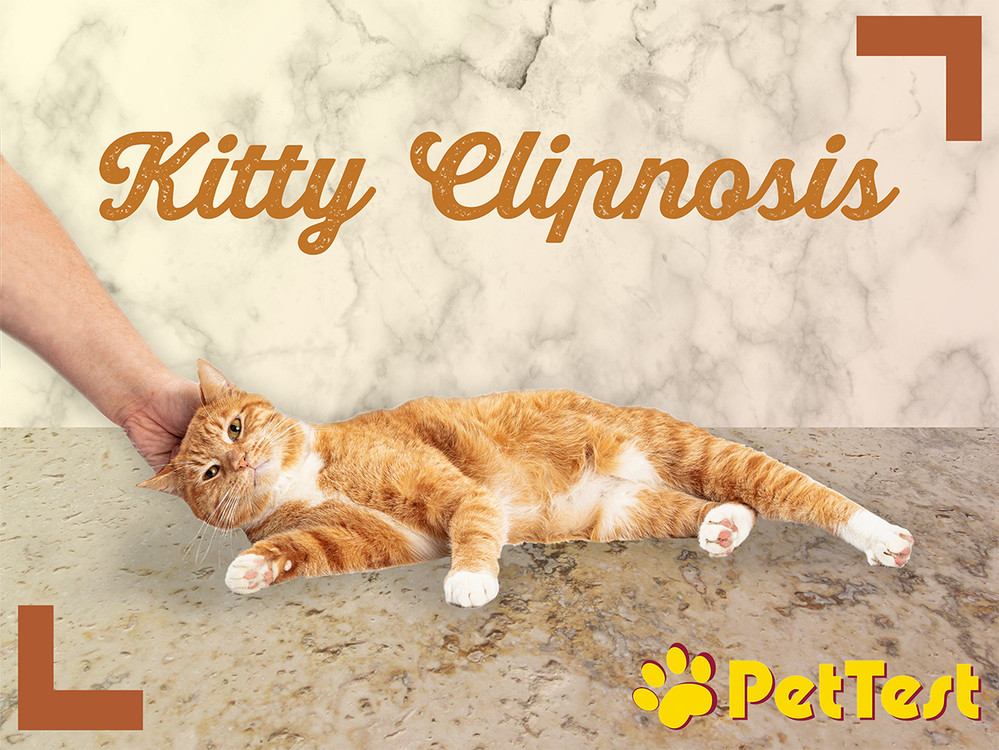Kitty Clipnosis - It Sounds Like a Disease But Isn't!
Clipnosis, also known as pinched-induced behavioral inhibition, is a phenomenon that happens when mama kitty grabs the scruff of a kitten’s neck to carry them around. If you have ever seen this, the kitten seems to dangle with their back feet up and front paws curled in. This is mom’s way of subduing their young in order to transport them without the kitten struggling. The neat part is most cats do not lose this instinct as they age. So, we have a drug-free, gentle way to get kitty to literally just stop. As a human, this is like the equivalent of mom calling you by your first and middle name! You know to stop, and that is that, regardless.
So why do this? Using a clip at the scruff of the neck kitty can be subdued for a short period of time for examination by you or your veterinarian, glucose testing, claw trimming, etc. This is great for cats who cannot be sedated with medicine for some reason, and it does not harm Kitty in any way. There are clips made especially for this purpose at many online retailers and pet supply stores. They look like butterfly clips without the “teeth” or binder clips but less rigid. There are tons of videos online showing this technique as well. It is not painful for Kitty either. Their bodies are built with that extra skin at the neck for this purpose.
As a responsible writer, I did some experimenting on my four cats. Two are elderly (15 years) and two are younger (less than three years). The older kitties immediately stilled when I gently grabbed the loose skin at the neck. The younger of my little kitties pulled her feet right up and was ready to be carried around, and she is my crazy one! (I truly expected her to struggle and freak out, but she was the most cooperative of all.) My other young girl was harder to get hold of as she does not like to be held. She loves attention but if she sees a second hand coming toward her, she bolts. I could get a hold of her, but she had to be relaxed to begin with. I do not think this would work for her at the veterinary office as she is easily stressed. In a side note, it worked on all my dogs. I did not try to pick them up but they were immediately stilled for a short time – so yay for us mixed households! After I let go, the cats just moved on with their day. The dogs were fine also except the Chihuahua who gave me the saddest-eyed look of betrayal before running to his blanket for comfort and shaking for a few minutes when I was in his line-of-sight.
Will this work on all cats? Probably not. My young girl, Friday, is extremely skittish about being held or having a second hand touching her. As she was a shelter cat who was returned by a previous adopter, her history is unknown. Some cats hate being held in any way period no matter what. As well, cats that were orphaned and bottle fed by a happy human hero, may not have that instinct as strongly as kittens that had time with their mama because they are not generally going to be moved around in the same manner by a human foster. Of course, some cats are just rebellious, stubborn, or completely uncooperative and will NOT pull their paws toward their body on principle because they are the cat, and you lowly human are the servant. For example, I know of one cat in particular who absolutely will not assist in being held in any position. She is a tuxedo cat, named Kiki, who seemingly has no bones and literally just hangs there if picked up. She does not pull her back legs up at all and will slowly ooze out of your arms. I think she is an outlier, or just a snobby little princess, but it is worth pointing out that sometimes Kitty’s personality will overpower instinct for various reasons.
When it works, using a clip may help especially when Kitty is newly diagnosed to help desensitize them to the process. The clip is also helpful in that you can have both hands free to do whatever needs done especially if you are the sole caregiver. This is a short-term few-minute technique, however. None of my cats put up with a clip for more than five minutes before trying to shake it off. It is advisable to have all your supplies ready in advance because Kitty cooperation time will likely be limited. In my experience, cats do not like to be inhibited at all, and using a clip takes advantage of their instinct but for a relatively short period of time. You could even start out putting the clip on and just petting or giving diabetic-healthy treats to help them get used to it. This may extend the clip’s “working time.”
Overall, this is a simple, cheap, drug-free, and pain-free way to induce instant calm for Kitty (and you)!
As always, you can find specifics and a lot of help on the Feline Diabetic Support Group on FB.

